On 12 October, FEP, in collaboration with STM, organised an Innovation Day in Brussels, in the framework of the Aldus project. It was an innovative event format to show the degree of innovation of the publishing sector through practical demonstrations and an interactive engagement with the audience. Eight innovators – publishers and start-ups from the book sector – presented some of their innovative products and services in Brussels, to an audience mostly composed of policy makers.
The Day started with a breakfast at the European Parliament (hosted by MEP Axel Voss), at which the speakers briefly introduced their products and services, to then take place around the room to provide live demonstrations for the audience on several devices (smartphone, tablets, etc.). The participants were offered in practice the possibility to visit an innovation ‘mini fair’ and to touch with hand a number of innovative developments in book publishing. The breakfast was opened by MEP Voss, who welcomed the participants and said a few words about the copyright legislative proposal about to be discussed in the European Parliament, which is very relevant for publishers and their capacity to innovate. Henrique Mota (President of FEP) and Barbara Kalumenos (STM) also greeted the participants, and Dorothee Werner (Head of Business Development at the German Publishers and Booksellers Association) set the scene with some introductory remarks about publishing an innovation.
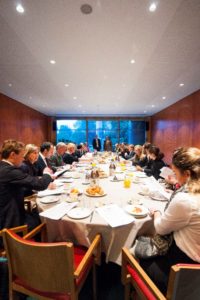
This session was followed by a meeting with several officials from DG GROW — the Directorate-General for Internal Market, Industry, Entrepreneurship and SMEs of the European Commission – from units dealing with the Digitalisation of the Single Market, Creative Industries, Member States’ Competitiveness, Economic Analysis and Resource Efficiency. The speakers in this case provided a mix of practical demonstrations and presentations, offering a broader view on their innovation activities. The Commission in turn outlined several of its programmes that support innovation (such as Horizon 2020 and Creative Europe) and mention a new initiative, a European Incubator Network to launch in 2017.
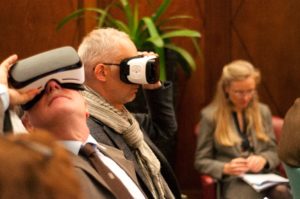
The final session was a walking lunch at the Residence Palace congress centre; once again, the speakers introduced their innovations with a mix of presentations and practical demonstrations, giving the audience also the possibility to experiment some of their products and services.
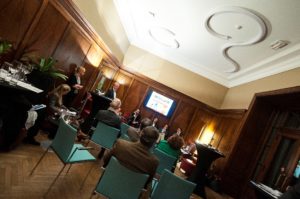
- In her introductory remarks, Mrs Werner highlighted her organisation’s collaborative approach to innovation: as they represent booksellers, publishers and wholesalers, when launching a project they always consider the sector as one. She made the examples of Libreka!, the first German e-book platform and also the first cooperation project of the whole branch in the e-book business; and of Tolino, another successful collaborative project of several partners in the industry, an e-reader and e-bookstore that managed in 2014 to outsell the Kindle. To these illustrations of the power of innovation and coopetition (the mix of cooperation and competition), she added the recent service of digital forecast about upcoming books offered by the German books-in-print platform VLB with data from publishing houses, which is now displayed in 3D.
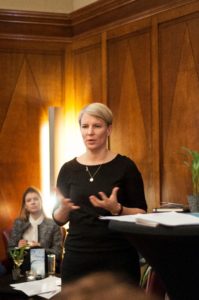
Mrs Werner then stressed the role played in stimulating innovation by the work of the members of the Association with start-ups, based on the belief that most disruptive changes come from the outside. This led the Association to launch, early this year, CONTENTshift, the first acceleration programme specially designed for the book industry, an experimental laboratory aimed at conceiving, developing and trying out new ideas and possibilities in collaboration with traditional and new entrepreneurs. The Association also wants to stimulate innovation across Europe, through the Federation of European Publishers, and supported the organisation of the Innovation Day to show the innovative strength of the content industry and to highlight and discuss challenges and needs at European level. Mrs Werner pointed out that content is king (and context, too) – as shown also by the recent declaration of Volkswagen’s Head of Digital that the company wants to become a content provider – and argued that to achieve leadership in content curation, several challenges must be addressed: shifting from content to platforms, providing intelligent connection as main product, stimulating interoperability, embracing coopetition and collaborating with complementary data sources.
To this end, she suggested several possible policy interventions: stimulating EU-wide collaboration in the field of big data, building on the cooperative attitude of the book sector to create an infrastructure to share data and analytic capacity within a reliable technical and business environment, through calls for projects dedicated to big data and the creative industries; establishing an agile European Innovation Council for all sectors, focusing on cooperation, prototyping, adapting and applying technology, discussing and validating use cases; creating a cross-industry Innovation Hub, to provide an interface between sectors, markets and technologies and thus a source of innovation opportunities, a place for the creative industries to try out technologies like virtual and augmented reality and artificial intelligence and thus address the increasing technological dimension of content; and creating incentives and stimulating an open innovation approach in companies while fostering a culture where not everybody wants to do everything alone.
These are the speakers of the Day, and the innovations they presented:
- Victor Bergen Henegouwen, Co-founder of Bookarang, Netherlands, presented Bookarang, a book recommendation service using Artificial Intelligence to match books and readers. Bookarang is a technology company specialised in literature analysis and book recommendations, which uses the latest developments in artificial intelligence to match readers and books (the concept is based on the audio similarity computation systems used in the music industry). While most systems are limited to mass-behaviour (what other people bought and viewed), Bookarang focuses exclusively on the content of books, deriving recommendations based on its analysis. Bookarang works for third parties such as book retailers and libraries, offering a range of possible services and tools, such as in-store screens and online recommendations, discovery by mood, book-to-personality matching, a chat-bot for personal book advice, geographical literary trips. Recommendation solutions can take many forms, ranging from online book discovery tools to reader profiling, personalised emails and in-store book advice screens.
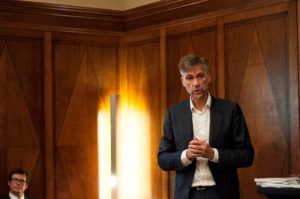
- Phill Jones, Director of Publishing Innovation at Digital Science, UK, presented Altmetric, which tracks and analyses online activity around scholarly research outputs. Digital Science is a technology company serving the needs of scientific research; its consulting division tries to help funders, publishers and institutions better understand and develop the impact of their work. Altmetric.com is the foremost database and analysis software for the measurement of broader research impact, from mainstream media to blogs and policy documents. It provides fully auditable, real-time updates of the online activity surrounding published research, based on alternative impact indicators called “altmetrics”, i.e. metrics and qualitative data that are complementary to traditional, citation-based metrics, such as peer reviews, citations on Wikipedia and in public policy documents, discussions on research blogs, mainstream media coverage, bookmarks on reference managers and mentions on social networks. ÜberResearch, another company in the Digital Science portfolio, offers a unique database of research grant funding and a predictive analysis platform that allows universities, publishers and funders to allocate resources more effectively. Its services are based on the notion that while publications and citations are very useful to know what has happened already, grants are a very good indicator of what is happening or is going to happen, and can fill the information gap of several years that separates the moment research is awarded a grant from the moment it yields publications and, still later, citations. Through its Dimensions Database, the first aggregation of global funding data, ÜberResearch allows understanding funding trends, offering publishers an analysis of emergent fields and enhanced possibilities to find reviewers, editors and other experts, helping funders do benchmarking and comparisons to other funders and facilitating strategic investment decisions by institutions about hiring, resources, tenure, etc.

- Ilas Körner-Wellershaus, Director for Copyright and Communication at Ernst Klett Verlag, Germany, presented eBookPro, a series of digital learning custom-fit solutions for learning at school and at home, with lessons, exercises and monitoring tools for teachers. One of these solutions, all based on a design that fosters the learning cycle “understand-practice-check”, is the language courses series Découvertes, which provides students with learning modules and interactive exercises, and the possibility to collaborate with other students; teachers have access to tools for preparing classes, administering and checking exercises (and identifying strengths and weaknesses of the students), uploading their own materials and more.
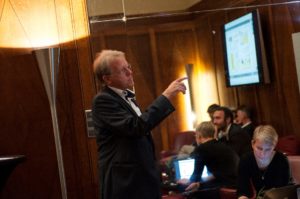
- Susanne Rupp, Responsible for Digital Learning Concepts at Cornelsen Verlag, Germany, presented Learning with virtual reality, a project in development of a digital learning environment with immersive virtual reality experience. The project, currently in a pilot phase, was launched in order to explore the potential of innovative technologies to improve teaching and learning, broaden possibilities and deepen understanding; upon acknowledging the limited uptake of ICT in German schools so far (due to infrastructural deficits, lack of teacher training and other reasons), the company, knowing that digital media were an important part of people’s everyday private and professional life – also for students, but not in school – tried looking into a new concept. Cornelsen thus partnered with technology provider Samsung to elaborate a project for the integration of virtual reality in school learning environments. The current pilot aims to envisage how learning could be made more attractive and interactive, evaluate suitability and learning outcomes in selected schools and communicate about progress and results to relevant policy makers. The project focuses on certain biology topics for grades 7 to 9; while a print book is still the basis of the learning process, the VR environment allows students to gain a deeper, first-hand experience, making it easier to assimilate abstract notions, allowing for collaboration with other students and for a high degree of interactivity in exercises. Teachers in turn can easily control the students’ progress and coach them individually, if necessary. The approach builds on trends in education such as mobile learning, collaboration and the use of technology like VR, while maintaining grounding in well-known elements and practices, such as the print book, the teacher and the classroom dynamics, to avoid trying to change everything at once. Development started with interdisciplinary teams elaborating concepts, then evaluated by multi-stakeholder juries (students, teachers, academics and the companies involved); once production is completed there will be testing in different schools and a final evaluation by Cornelsen and a partner university.
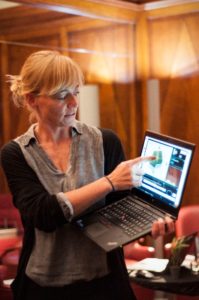
- Christian Schumacher-Gebler, CEO of Bonnier Media Deutschland, Germany, presented LeYo!, an augmented reality learning app, and CONTENTshift, the German Publishers and Booksellers Association’s funding programme for start-ups. The LeYo! series books are children’s books that conjugate learning and fun through interactivity: buying the print book gives free access to download an AR app, through which children – with tablets or smartphones – transform the books in interactive stories, to play with at their own pace. Stories, sounds, knowledge and games, enhanced by augmented reality, help kids understand the world around them through an innovative and interactive book concept. CONTENTshift is a 3-month acceleration programme (July-October 2016) for European start-ups with focus on content; start-ups received coaching, mentorship, pitching opportunities and other services, after being selected by a high-level jury composed of publishing CEOs (who also support the programme financially), which selected a final winner at the 2016 Frankfurt Book Fair. The aim of the initiative is to make use of the synergies between start-ups and established companies and stimulate entrepreneurial skills and spirit, as well as to foster a sector-oriented network of investors and for coopetition to firmly anchor innovation in the industry. Mr Schumacher-Gebler also presented a few other examples of innovative products and services, from Publishing Light, a self-publishing platform offered by Bonnier Media to authors, to a case of failure (which is also part of an innovation process), a book recommendation platform that people actually used quite a lot, but only to then buy the books recommended on Amazon; he also mentioned Jellybooks, a platform that offers free e-books in exchange for users’ reading data, which are then made available to authors and publishers – this was a reminder of the importance of reading analytics for the book trade.
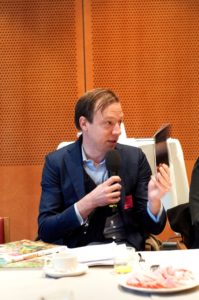
- Florent Souillot, Head of Digital at Madrigall (Gallimard-Flammarion), France, presented The Atlas Collection by Autrement, which relies on a system for producing and distributing simultaneously dedicated content in print, ePub3 and applications, making them available to both e-bookstores and libraries. The Atlas is a collection of thematic atlases on a wide range of topics (history, geography, society, geopolitics, etc.), with highly structured content (texts, sources, references, glossaries, bibliographies, quotes, etc.), complex layouts (integration of texts and images, maps, charts, graphics), created by one specialised author and one cartographer. The main idea behind the series is how to use digital to improve the discoverability and readability of book content. Form the discoverability point of view, digital allows to commercialise new units (chapters and themes), provide semantic structuring of content, embed links and navigation tools and enhance metadata, as well as to provide access across multiple devices and apply cross-referencing and cross-selling methods. Readability is fostered by multimedia enhancements, adaptive layouts, pop-ups, zoom and annotation functionalities and interactive tables of contents; and again, by the possibility to access books on different devices. The atlases are produced as PDF files, ePub with added functionalities and applications (on top of print); the digital simple version, in PDF, has a non-adaptive layout based on the print one and is used for the library market and part of the consumer market, while digital enhanced versions in ePub3, with reflow and adaptive layout, include a series of further functionalities (as described before: indexation, search, hyperlinks, zooming on maps, interactive tables of contents, and so on) and are destined to consumer sales. The Atlas Digital Database is an IOS app, a collection of maps that can be accessed via new commercial and semantic units – users can buy individual chapters or modules at a small price, build a thematic database, etc. – available as a freemium model. Digital Atlases are now available in more than 50 countries, in both e-bookstores and libraries; the commercial effort is huge, as is its impact on the business model and staff requirements, especially when working with proprietary formats (such as Amazon’s and Apple’s). The lack of interoperability in the e-book market, in fact, means that publishers need to produce different formats for different devices, while users are locked up in closed ecosystems; it’s not only a technical but also a commercial problem, which leads to product fragmentation, commercial monopolies, higher costs and lower revenues. Interoperable reading systems and standardised user-friendly DRM systems would be a solution and foster bookstore and library diversity, allowing exploiting the full potential of ePub in terms of distribution.
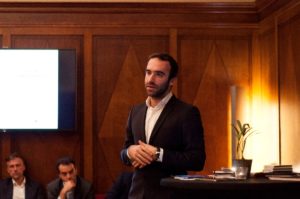
- Ildikó Török, Head of Business Development at Mozaik Education, Hungary, presented mozaBook, an educational software suite for interactive touch displays. MozaBook expands teaching tools with versatile illustration, animation and presentation possibilities; a wide range of interactive content and built-in skill-developing, illustrative and virtual lab applications help to arouse students’ interest. A lot of investment went into developing the software (150 engineers worked on it for 10 years), and feedback from teachers and students was incorporated in order to make it simple and intuitive to use. Exercise books and worksheets created in mozaBook can be shared at school or national level, allowing teachers to access and use each other’s exercise books and worksheets in the classroom. MozaBook provides access to its large media library, which contains more than a thousand interactive 3D animations, hundreds of educational videos, tools, games and numerous audio files and worksheets; it can also open PDF documents, allowing users to use PDFs as the basis of their presentations and turn them into digital publications, by adding interactive content from the media library. It can be used on both interactive boards and computers; its user interface supports and can adapt to varying display sizes. Among its various features, mozaBook allows creating interactive assignments, custom exercises for the classroom and homework. The suite is currently offered for free to those who purchase Mozaik’s print books; otherwise the software can be licensed separately and users can upload their own PDF materials. It requires of course good ICT infrastructure, which is not always available; Mozaik offered it for free to Hungarian schools as the government had bought interactive whiteboards but no content, and it is currently used in 70% of Hungarian schools.
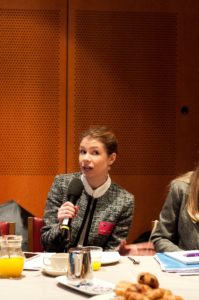
- Joris van Rossum, CEO and Co-founder of Peerwith, Netherlands, presented Peerwith, a peer-to-peer platform for author services, focusing on scientific publishing. Peerwith offers author services such as proofreading, translations and visual design; it allows researchers to interact with experts in author services directly, without the mediation of an agency, making these important services in an increasingly global community more efficient, effective and transparent. In fact, about 30% of authors use services before submitting their manuscripts to publishers; often these services help removing the language barrier for non-native English speakers and are crucial for many emerging countries. The mechanism is that of many online marketplaces: Peerwith is indeed a marketplace for connecting researchers and experts that can provide the requested services. Access to the platform is free for authors, who submit their requests, get customised quotes and select their preferred experts, with whom they agree on fees and conditions.
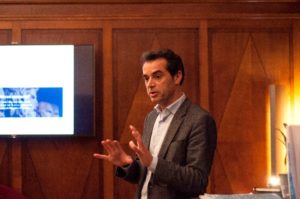
The Innovation Day Programme is available HERE.
Speakers presentations are available HERE.
 By
By 

















